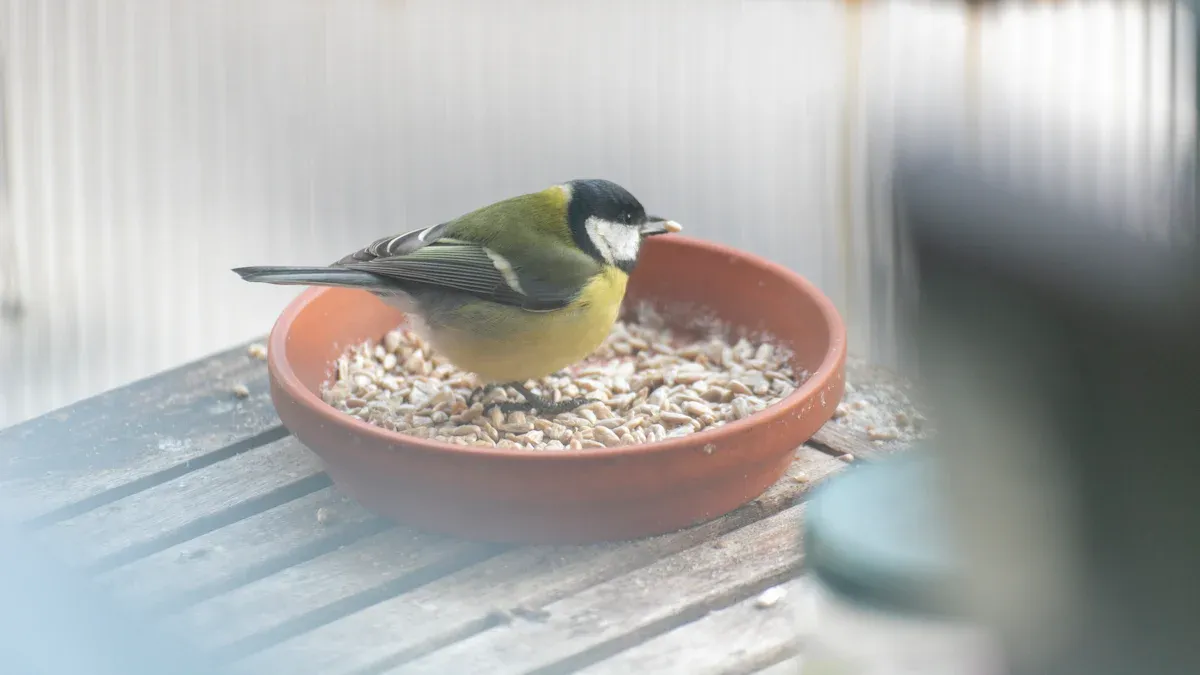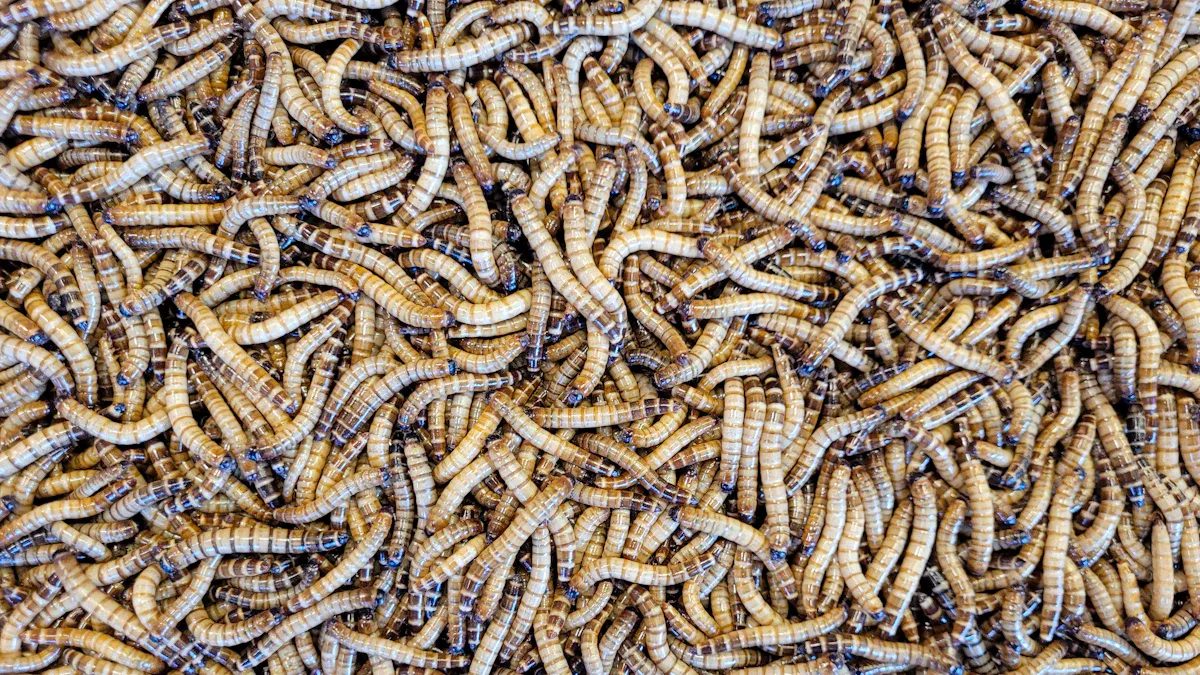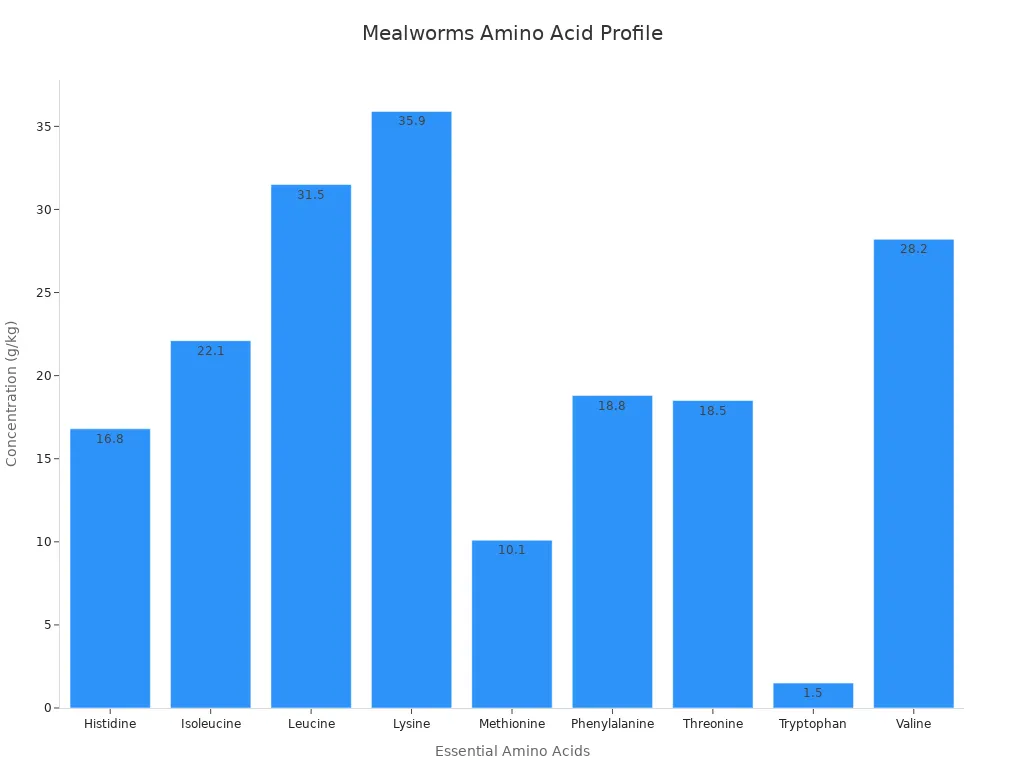
Dried mealworms bird food gives backyard birds a tasty boost of protein and healthy fat. Birds like bluebirds, cardinals, and robins flock to Innosentia Bird Dried Mealworm Topping. Studies show these treats help birds stay active, grow strong, and maintain bright feathers all year.
Key Takeaways
- Dried mealworms provide backyard birds with high protein and healthy fats that boost energy, growth, and feather health all year.
- Many bird species like bluebirds, cardinals, and robins love dried mealworms, making them a great way to attract diverse birds to your yard.
- Feeding dried mealworms is easy and safe; use shallow feeders, offer small amounts, and avoid artificial colors to help birds thrive naturally.
The Benefits of Dried Mealworms Bird Food

High Protein Content for Energy and Growth
Birds need protein to stay strong and healthy. Dried mealworms bird food stands out because it packs a powerful protein punch. Most dried mealworms contain between 47% and 55% protein, which is much higher than many other bird foods.
| Nutrient | Protein Percentage Range |
|---|---|
| Dried Mealworms | 47% to 55% |
This high protein level helps birds in many ways:
- Fuels daily activities like flying, singing, and foraging.
- Supports muscle growth and feather development.
- Helps young birds grow fast and strong.
- Boosts the immune system and aids tissue repair.
Did you know? Protein from mealworms is even higher than soybean meal and close to fishmeal. That means birds get the energy they need, especially during busy times like nesting or molting.
Innosentia Bird Dried Mealworm Topping gives your backyard birds all this protein without the hassle of live insects. It’s a simple way to help birds thrive, especially when natural bugs are hard to find.
Essential Vitamins, Minerals, and Healthy Fats
Dried mealworms bird food is more than just protein. It also provides a rich mix of vitamins, minerals, and healthy fats that keep birds in top shape. Here’s a closer look at what’s inside:
| Nutrient Category | Details |
|---|---|
| Protein Content | 48%-54% with a well-balanced amino acid profile |
| Fat Content | 28% fat, mostly unsaturated (Omega-6 and Omega-9) |
| Vitamins | B1, B2, B12, E, D, and C |
| Minerals | Potassium, calcium, magnesium, phosphorus, iron, copper, zinc, manganese, selenium |
| Fiber and Chitin | Supports digestion and immunity |

- Healthy fats in mealworms give birds long-lasting energy and help keep their feathers shiny.
- B vitamins support energy metabolism, while minerals like iron and zinc boost bone health and immunity.
- Fiber and chitin help with digestion, making mealworms a complete food choice.
Compared to many processed bird foods, dried mealworms bird food offers a natural, nutrient-dense option. It’s a smart way to support birds during breeding, molting, or cold weather.
Welcomed by a Variety of Bird Species
One of the best things about dried mealworms bird food is how many different birds love it. Innosentia Bird Dried Mealworm Topping attracts a colorful crowd to your backyard, including:
- Bluebirds
- Chickadees
- Cardinals
- Nuthatches
- Woodpeckers
- Wrens
- Robins (who are especially fond of mealworms)
- Flycatchers
- Jays
Many birdwatchers notice that once one bird finds the mealworms, others quickly join in. Even wildfowl at local ponds enjoy them, making mealworms a healthier alternative to bread.
Tip: If you want to see more birds in your garden, try adding dried mealworms bird food to your feeders. You might be surprised by the variety of visitors!
Dried mealworms bird food is easy to handle, shelf-stable, and mess-free. It’s a reliable way to help birds get the nutrition they need, no matter the season.
How to Feed Dried Mealworms Bird Food Safely and Effectively

Rehydration and Portion Control Tips
Many bird lovers wonder if they should soak dried mealworms before feeding. Experts say rehydration is not necessary. Birds handle dry food well and do not face dehydration or digestive problems from eating dried mealworms bird food. Birds naturally form pellets with indigestible parts and spit them out, so there is no risk of compaction.
Here are some simple tips for safe feeding:
- Use shallow dishes or trays to keep mealworms from escaping.
- Protect mealworms from rain to keep them fresh.
- Offer small amounts at first. Birds will eat what they need, and parent birds know how to feed their chicks safely.
- Avoid dyed maggots or colored insects, as artificial colors may harm birds.
Tip: Place feeders in a spot where you can watch the birds enjoy their treat!
Choosing the Right Feeder for Your Birds
The right feeder can make a big difference. Studies show that different birds visit feeders based on design and placement. For dried mealworms, many birders recommend the Erva Bluebird Feeder with Mealworm Cup. This feeder uses a metal cage to protect birds from predators and keeps mealworms in a central cup. Reviews praise its durability and ability to attract bluebirds, cardinals, and orioles while keeping out larger, unwanted birds.
Other options include ground feeders, suet feeders, and tube feeders. Each type attracts different species, so try a few to see which works best in your yard.
Addressing Common Concerns and Myths
Some people worry about overfeeding or harming birds with dried mealworms. Wildlife experts agree these concerns are myths. Birds regulate their own diets and know how much to eat. Dried mealworms bird food is safe, nutritious, and easy to use. Just follow basic feeding tips, and your backyard birds will thrive.
Dried mealworms bird food gives backyard birds a simple boost. Dan Gleason, an ornithology expert, says birds love mealworms and stay healthy with them. He notes birds avoid overeating and stay hydrated.
- Mealworms attract many species
- Birds get protein for every season
- No risk of dehydration or blockages
FAQ
Do dried mealworms attract only certain birds?
Many birds love dried mealworms. Bluebirds, robins, chickadees, and cardinals all visit feeders for them. Even wildfowl at ponds enjoy this protein-rich treat.
Can birds eat dried mealworms all year?
Yes! Birds benefit from dried mealworms in every season. They help during nesting, molting, and cold weather when natural insects are hard to find.
Tip: Innosentia Bird Dried Mealworm Topping gives birds a steady protein source, even in winter.
Are dried mealworms safe for baby birds?
Parent birds feed mealworms to chicks. The protein helps young birds grow strong. Always offer small amounts, so parents can choose what is best for their babies.


